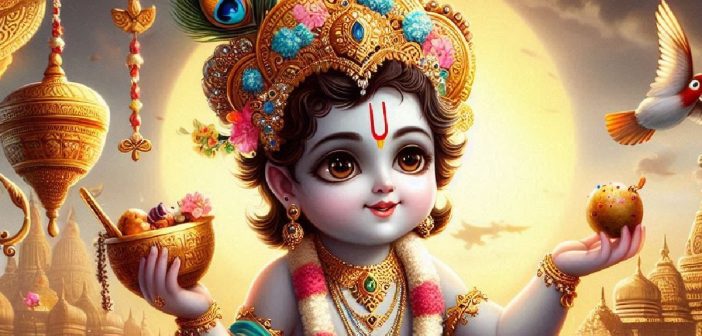Dahi Handi, a vibrant and colorful festival celebrated primarily in Maharashtra, India, is a unique tradition that showcases the spirit of teamwork, agility, and devotion. This annual event commemorates the birth of Lord Krishna, who was known for his mischievous pranks, one of which involved stealing butter from pots hung high from ceilings.
Significance
The festival holds significant religious and cultural importance:
- Religious Significance: It is believed that Lord Krishna’s mischievous act of stealing butter from pots symbolized his victory over evil.
- Cultural Significance: Dahi Handi promotes teamwork, camaraderie, and sportsmanship. It is a celebration of unity and community spirit.
History
The exact origins of Dahi Handi are shrouded in myth and legend. However, it is believed to have started as a simple tradition among the Gopaalas (cow herders) who worshiped Lord Krishna. Over time, it evolved into a grand celebration involving pyramids of human beings, known as Govindas, attempting to reach and break pots filled with curd and coins.
The Dahi Handi Tradition
The main highlight of Dahi Handi is the formation of human pyramids, known as Govinda Pathaks. These pyramids are carefully constructed by teams of participants, often comprising hundreds of people. The Govindas climb the pyramid, attempting to reach and break the pot, which is usually hung high above the ground.
The pot, often decorated with colorful flags and symbols, is filled with curd and coins. Breaking the pot is considered a symbol of victory and brings great pride and honor to the team. The winning team is often rewarded with cash prizes, trophies, and other honors.
Prizes and Rewards
Dahi Handi competitions often offer significant prizes and rewards, attracting teams from all over the city. The prizes can include:
- Cash prizes: Large sums of money are often awarded to the winning teams.
- Trophies and medals: Symbolic awards are given to recognize the achievements of the winning teams.
- Other rewards: In some cases, teams may receive additional rewards, such as gifts or recognition from local authorities.
Safety Measures
While Dahi Handi is a festive occasion, it also carries inherent risks due to the nature of the human pyramids. To ensure the safety of participants, organizers often implement safety measures, such as:
- Medical assistance: Medical teams are usually present at the event to provide immediate care if necessary.
- Safety equipment: Participants may be required to wear safety gear, such as helmets and protective padding.
- Supervision: Experienced professionals may oversee the formation of pyramids and provide guidance to participants.
Dahi Handi in Mumbai
Mumbai, being the capital of Maharashtra, witnesses some of the most spectacular Dahi Handi celebrations in the country. The city is home to numerous Govinda Pathaks, each vying for the title of the best team. The festival is marked by vibrant colors, music, and dancing, creating a festive atmosphere throughout the city.
The Balancing Act of Tradition and Safety
Dahi Handi is a unique blend of tradition, sportsmanship, and community spirit. However, it is essential to acknowledge the risks associated with this tradition and take appropriate safety measures to prevent accidents. The organizers and participants must strike a delicate balance between preserving the cultural heritage of Dahi Handi and ensuring the safety of all involved.
The Human Cost of Dahi Handi
Despite the safety measures implemented, accidents can still occur during Dahi Handi celebrations. In recent years, there have been instances of serious injuries and even fatalities. These incidents have raised concerns about the safety of the tradition and prompted calls for stricter regulations.
Balancing Tradition with Safety
To address these concerns, it is crucial to find a balance between preserving the cultural heritage of Dahi Handi and ensuring the safety of participants. Some possible measures include:
- Height restrictions: Implementing stricter height restrictions on pyramids can help reduce the risk of falls and injuries.
- Safety training: Ensuring that all participants undergo proper safety training can help them understand the risks involved and take necessary precautions.
- Regular inspections: Conducting regular inspections of pyramids and equipment can help identify potential safety hazards.
- Emergency response plans: Having well-prepared emergency response plans in place can help ensure that accidents are handled effectively.
- Promoting responsible celebrations: Encouraging participants to celebrate Dahi Handi in a responsible manner, without resorting to excessive risk-taking, can help reduce the likelihood of accidents.
The Future of Dahi Handi
Dahi Handi is a deeply rooted tradition that holds significant cultural and religious importance. However, it is essential to adapt to changing times and ensure that the festival remains safe and enjoyable for all. By striking a balance between tradition and safety, we can continue to celebrate Dahi Handi for generations to come.
Conclusion
Dahi Handi is a unique and colorful festival that showcases the spirit of teamwork, devotion, and cultural heritage. While it carries inherent risks, it is possible to celebrate this tradition safely and responsibly. By implementing appropriate safety measures and promoting responsible celebrations, we can ensure that Dahi Handi remains a joyous and memorable event for years to come.






